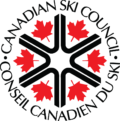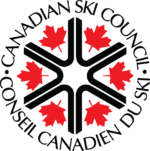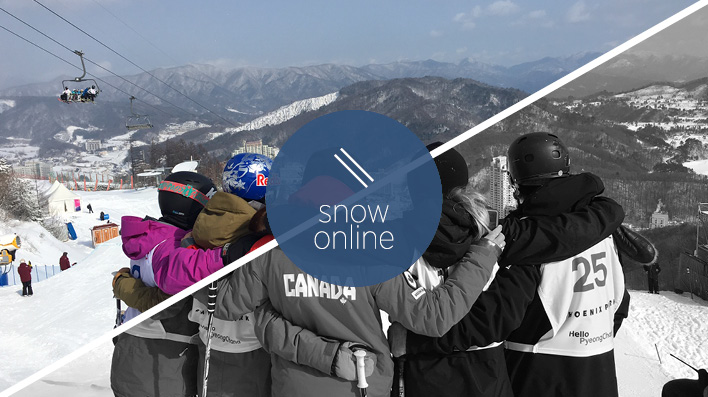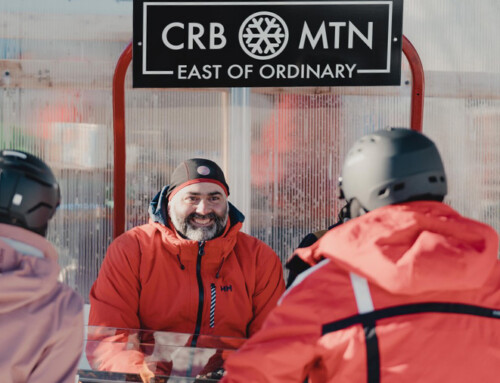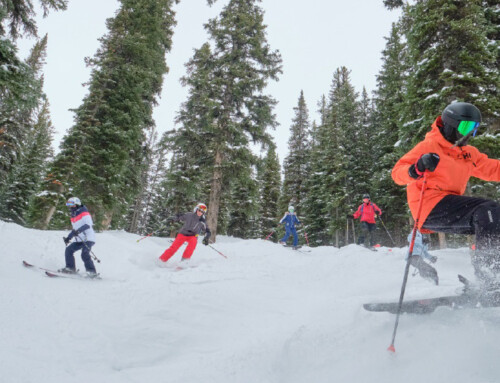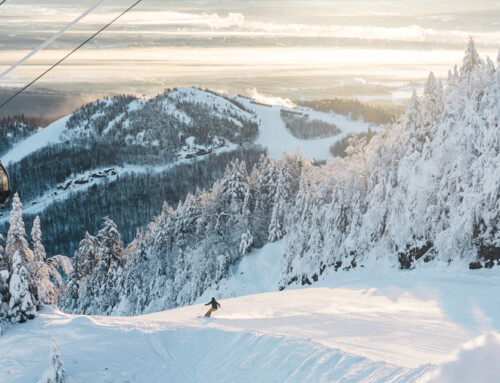Even as we were cheering Canadian Jenn Heil capping her legendary career with a silver medal at the 2010 Vancouver Games, we had begun to ask why only 25% of our CFSA members were girls – and why were they were dropping out at an alarming rate around 12 years old?
Research in 2011 conducted by the University of Alberta suggested the top 3 reasons for departure stood out quite clearly 1: A lack of friends 2: A lack of Role Models 3: Limited confidence in their ability to perform Freestyle skills.
Dr. Vicki Harber created a workshop we took across the country in a Girlz Education Tour in 2012, delivering some practical information for our mostly male coaches to understand a few critical factors in working with ladies. This is the slide that has probably created the largest impact in the years since.
Girls simply need to feel accepted – by her coach and her training group – to trigger the level of effort that ultimately leads to performance. Is every girl or boy the same? No. But overall the research says that for girls feeling ‘safe’ socially is undeniably important. For coaches this means paying attention to preventing cliques from forming, and ensuring all athletes are getting equal and effective input – and for some coaches, resisting focussing more attention on higher performing athletes.
In January 2016 CFSA’s High Performance Athlete Development director Julie Steggall gathered a small but mighty group of a dozen girls from across Canada who are emerging as strong prospects for the Canadian Slopestyle Team for the first ever HPAD girls camp.
Olympians Dara Howell, Yuki Tsubota and Kim Lamarre were on hand to act as role models, and Lamarre took a great deal of time and care to continuously say “we have to support each other, its tough being a girl in this sport.”
Steggall was very clear on her expectations and the focus of this camp. “It is our goal to create a rich social environment within a nationwide Slopestyle niche with clear technical goals.” Steggall further impressed to these young women that “female athletes need to support and celebrate each other if they want to feel good about what they are doing and to be successful, not only in skiing but in life” For many of the athletes who often battle alone to keep up with the guys, it was a paradigm shift to see athletes from other parts of Canada as friends and not just the competition.
Ontario Slopestyle Team coach Pat Walsh says they have been able to follow up and partner their female athletes to train with girls from other provinces. “We are paying attention to the social factors and it is impacting how we plan our program. It could be exciting to see the girls come together to form a training group year round in the future.”
Another key evolution is in understanding the “confidence gap’ that coaches consistently struggle with between their female athletes’ abilities, and the fear that lies in the way of performing those skills. Understanding that women tend to consistently underestimate their potential compared to males has been an important starting point in grappling with the emotional side of performance.
Winsport Next Gen Halfpipe coach Jeremy Cooper talks about how they have come to realize that one major factor leading to lowered confidence is that women have often being trying to master skills in inappropriate environments. They feel the pressure to keep up with male teammates who are most often comfortable hitting bigger jumps at faster speeds. This has led to high injury rates for girls, and a cycle of diminishing confidence.
“We are really paying attention to make sure girls are training on the appropriate sized features, and are mastering a wide variety of take-offs, spins and grabs before taking tricks off bigger jumps.” Says Cooper. The HPAD coaches have been a strong voice in making sure Canada Cup events have at least two choices of jump size so that individual athletes can make a safe choice at the right time.
Cooper adds, “There is a lot of pressure on girls to live up to the images of female sports champions who are often glamorized for their looks. I focus on empowering them to be proud of their hard work and personal accomplishments, and the good sportsmanship they bring to the hill. That is our strategy to have them develop the confidence and competence to excel.”
The good news is the numbers are shifting and in 2015 CFSA saw the number of new female freestyle athletes actually outstrip the number of new males. While that may have been in part to the incredible performances of the Dufour-Lapointe sisters in Sochi, we also believe that simply taking the time to understand the differing technical and social/emotional needs of our female athletes is making a big difference.
Canadian Freestyle is working with Ringette, Soccer, and Hockey with the support of the Canadian Association for the Advancement of Women in Sport and Physical Activity (CAAWS) and the Canadian Olympic Foundation to create an online resource on coaching female athletes, and CFSA are proud to be leaders in equally valuing the participation of women and girls. Find more CAAWS resources at https://www.caaws.ca/publications/active-girls/.
As well CFSA has been able to support Girlz camps across Canada last spring and again this year thanks to Sport Canada and the Waterloo Innovation Network. Contact your Provincial Sport Organisation to track down a WIN Girlz Camp near you this spring!
